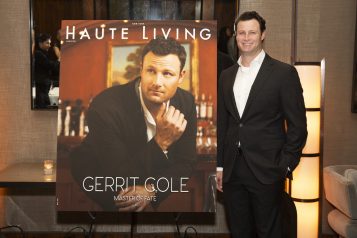The road to the top is always tough, but for Sandy Hequin of Morays Jewelers, who is armed with innate business savviness and exquisite taste, the results are always fruitful.
The Morays Jewelers experience is just that—an experience. In a world of fast-paced, quick-decision shopping, which is quite often online, the touch-it, feel-it, try-it-on process can get lost in the sauce. Not at Morays. The jewelry house boasts high-end watch brands like Audemars Piguet, Dior, Bulgari, Panerai, and Tag Heur, and luxurious baubles like David Yurman, Marco Bicego, and Mikimoto. Tucked away in the heart of the Miami Jewelry District, which is the third largest district in the nation following New York and Beverly Hills, the sixth-generation, upscale jewelry store dates back 110 years. But even after more than a century of experienced success, the fundamentals remain intact.
In 1900, Max Schechter arrived in New York City from Austria-Hungary. Before long he discovered his penchant for timepieces and began to offer the treasures from a considerably humble dig—a pushcart. By 1920, Schechter opened the first jewelry exchange in the Bowery and garnered enough success to give each of his sons a booth of their own, $10,000, and the chance to embark on a glittering journey into the complex layers of the jewelry business.
In 1942, the Bowery-based booth was reborn in Miami, but not yet in the expansive space that stands tall on Northeast 2nd Avenue. That reality came to existence through the clever musings of current owner and Max’s great-great-granddaughter, Sandy Hequin.
Hequin started young. In the Schechter family tradition, offspring starts working at the ripe age of 5, broom in hand, sweeping the store floors while soaking up knowledge under the tutelage of Grandpa, and in Hequin’s case, her father, Richard Schechter, as well. It seems they had the right idea; by the time she was 16, she was given four blank checks and dropped at a jewelry show in New York City to do her first buy for the boutique. What she wasn’t given were instructions, just her father’s faith in her exquisite taste. Selections in hand, Hequin asked her father to review. “I had left my business card on the trays with my selections, and as we went around to see what I had chosen, we saw the card of old lady Fortunoff [of Fortunoff Jewelry] placed on top of each of mine.” At the time, Hequin and “Old Lady Fortunoff” were the only women working in a man’s jewelry world, and Fortunoff was significantly older and with much more experience. “Dad told me, ‘I don’t have to see the pieces. If Fortunoff is buying your picks then you’re doing something right.’”
That was only the beginning.
At her second show and representing one of the only stores to cater to watch collectors, Hequin found herself being ignored by the vendors. “Nobody wanted to help me.” But even then she was already garnering a little buzz. “A man at the booth next door said to the watch vendor, ‘Don’t you know who that is?’ I ended up buying two jeweled, skeleton-back watches—one with rubies and one with emeralds. The next year, the man who ignored me vied for my visit to his booth.” Hequin remembers making the watch purchases and selling them to a client. And she vividly recalls wrapping the watches herself, and the whopping $100 tip she received from it.
The memory remains embedded in her mind, but in terms of financial compensation, the $100 really just marked the beginning of a very lucrative career for Hequin and her future husband, Bob Hequin.


















